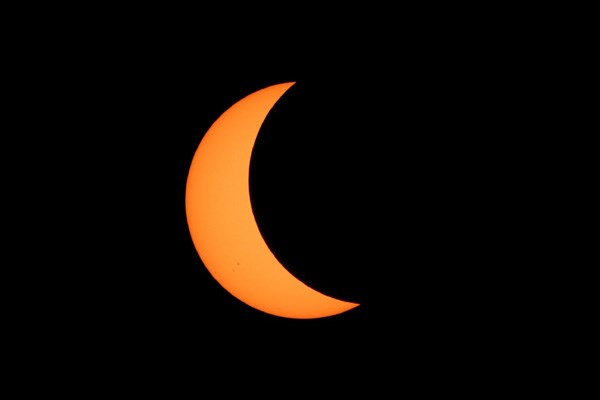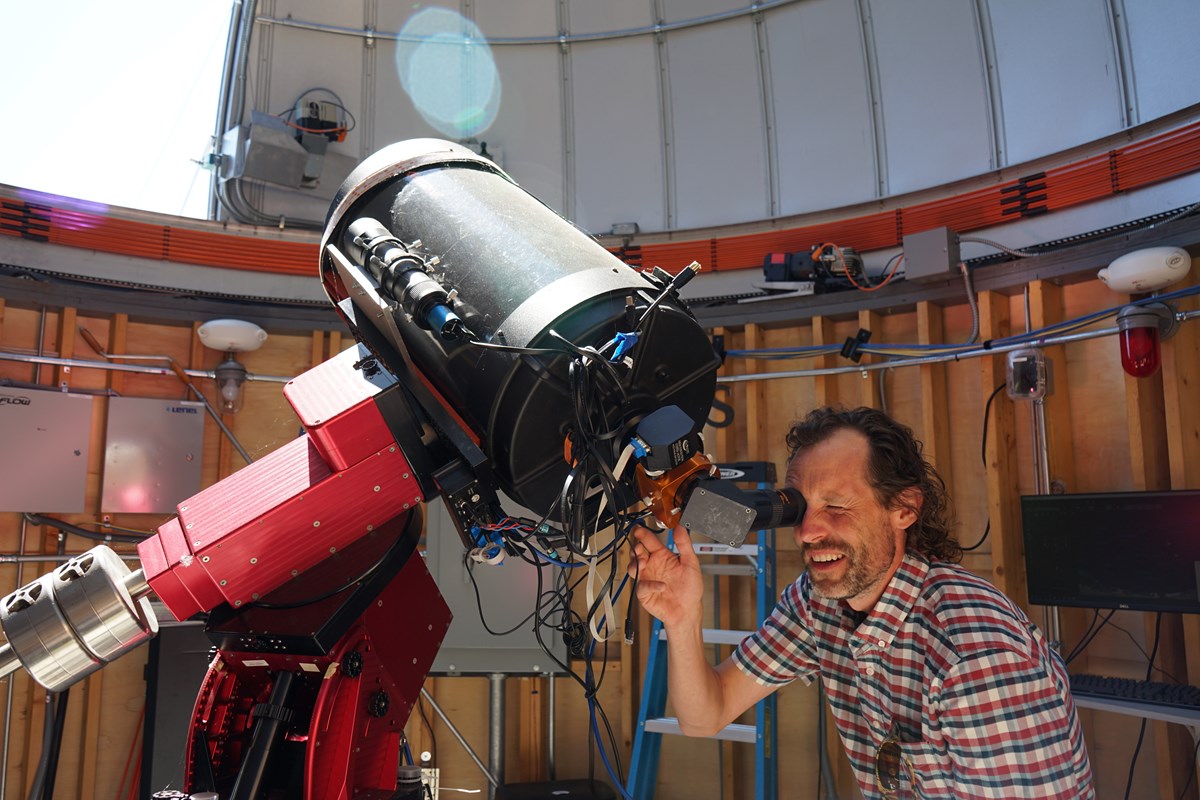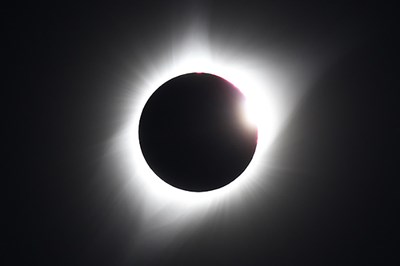Physics Assoc. Prof. Silas Laycock Shares Expertise on Solar Eclipses
 Image by Joson Images
Image by Joson Images
03/27/2024
By Brooke Coupal
The United States mainland is set to witness an extraordinary phenomenon that won’t occur again for another 20 years.
On April 8, a total solar eclipse will make its way from central Texas to northern Maine, with a partial solar eclipse viewable from dozens of states, including Massachusetts.
In preparation for the big event, we sat down with Physics Assoc. Prof. Silas Laycock to learn more about solar eclipses.
Q: What is a solar eclipse?
A: It’s when the moon goes between the Earth and the sun, therefore obscuring our view of the sun.
Q: How do scientists predict when a solar eclipse will occur?
A: In ancient times, people predicted eclipses simply by using patterns of numbers. Many ancient cultures noticed a pattern of when solar eclipses happened and that the cycle repeated itself perfectly. By making records of when solar and lunar eclipses occurred, it was possible for people to precisely predict eclipses even before gravity and orbital mechanics were understood. Nowadays, we use orbital mechanics to calculate when different alignments will occur. Orbital mechanics calculations are made using computer models of the positions of the Earth, sun and moon. We can calculate the path that the moon will take when it crosses the sun and ultimately track which locations on Earth will see a total eclipse, a partial eclipse or no eclipse.
Q: How often do solar eclipses happen?
A: Total solar eclipses rarely occur. You would think the sun, the moon and the Earth would all line up once a month because the moon orbits the Earth and the Earth orbits the sun, but the orbital planes do not perfectly coincide with one another. The moon’s orbital plane is tilted by a slight amount, preventing us from having monthly eclipses. The next total solar eclipse for the continental U.S. (after the 2024 eclipse) won’t happen until 2044, because that’s the time it will take for the moon's orbital plane to go back to being lined up with the solar system again.
 Image by Brooke Coupal
Image by Brooke Coupal
Q: You’ve seen a solar eclipse before. What was that like?
A: The first total solar eclipse I saw was in 2017. I traveled to Idaho for an American Astronomical Society conference to watch that one. It was spectacular. Everybody brought all kinds of telescopes, including me, but when totality came, I pulled myself away from the equipment, laid on my back and just watched it. It was such an amazing sight. (Check out these tips for safe viewing of the eclipse.)
As an eclipse approaches totality, there’s a really interesting phenomenon that occurs, known as the diamond ring effect, where it appears to the eye that a brilliant blaze of light is coming from one spot on the moon just before the last bit of sun is covered. Another fascinating phenomenon is called Baily’s beads, which is an effect where there is a whole bunch of little bright spots around the rim of the moon, which are actually the sun shining through the valleys and hills on the moon’s surface. You need to go to the path of totality to see those effects, which for this eclipse, includes the tip of New Hampshire, northern Maine and northern Vermont.
Q: Will people be able to see this year’s solar eclipse at UMass Lowell?
A: UMass Lowell’s campus will see 94% of the solar eclipse, making it a partial eclipse. The eclipse will start becoming visible around 2:15 p.m. That’s when you’ll notice the rim of the moon starting to encroach on the edge of the sun while looking at the sun with your solar glasses. By about 3:30 p.m., we’ll reach the deepest point of the eclipse, with just a little crescent of the sun remaining. It will be noticeably darker with most of the sun covered up. The eclipse will end just after 4:30 p.m.
Q: What solar eclipse viewing events are taking place at UMass Lowell?
A: The Kennedy College of Sciences dean’s office is handing out free eclipse glasses and will be hosting an eclipse viewing party on the rooftop of the North Campus Parking Garage. At the Schueller Observatory on South Campus, we’ll have the dome open with a solar filter on the telescope, so people can come in and look through the telescope as the eclipse progresses. The Astronomy Club will also set up other solar telescopes on the South Campus quad and be handing out more glasses. Hopefully, the weather will cooperate.

